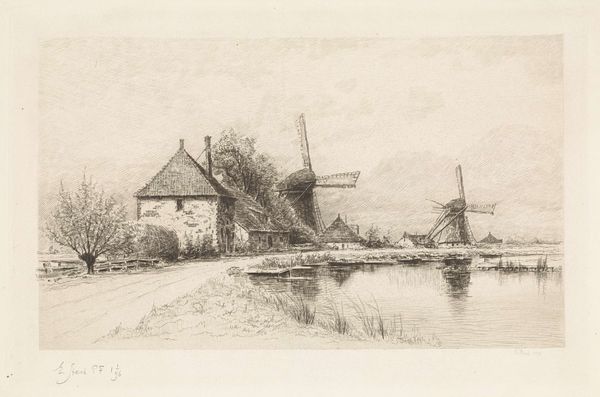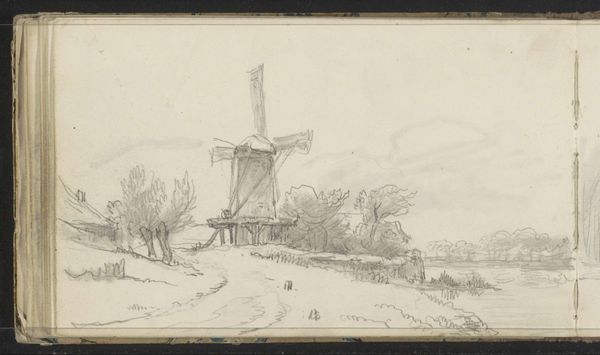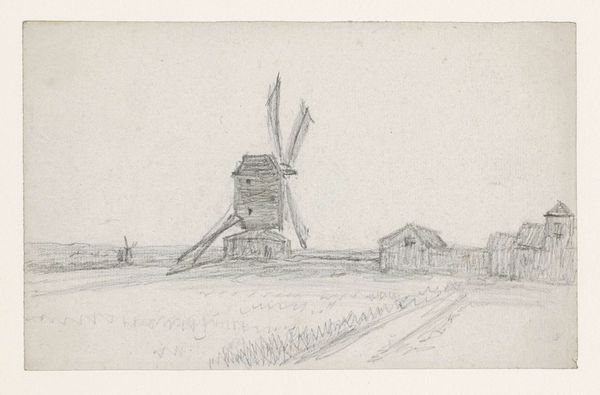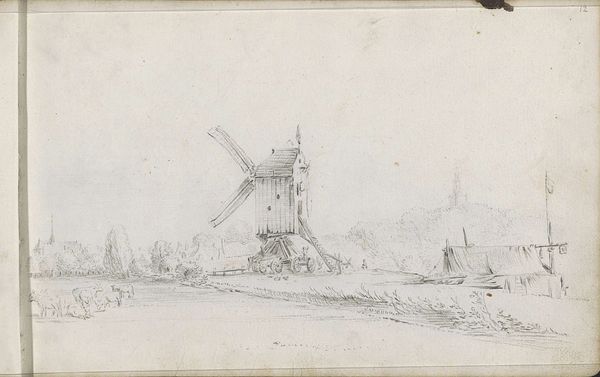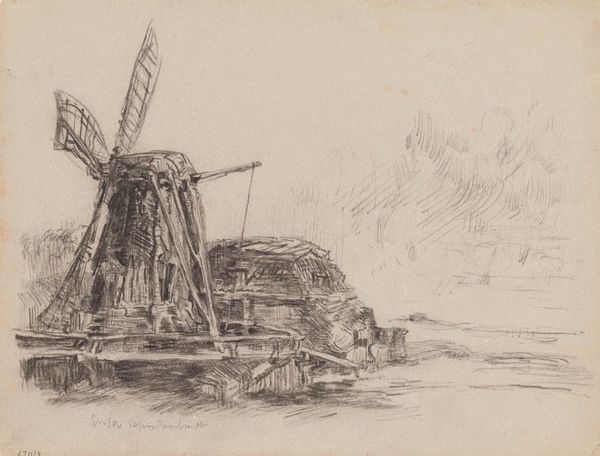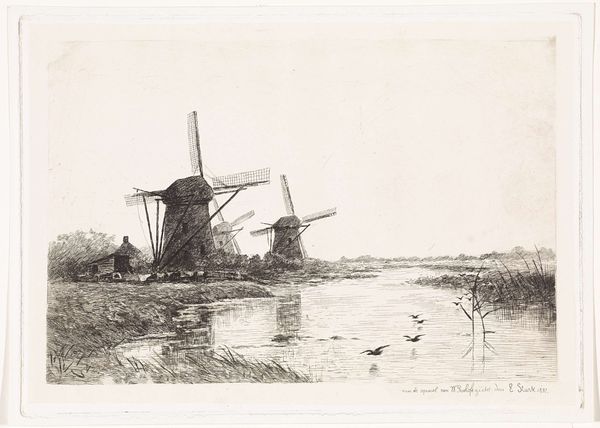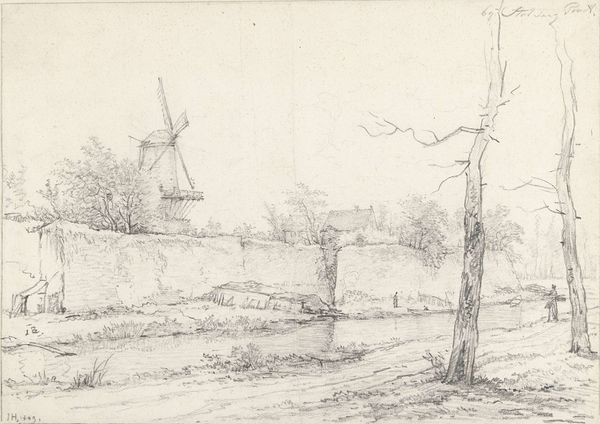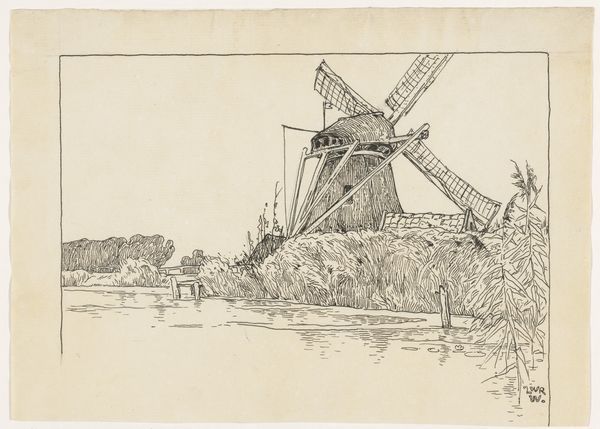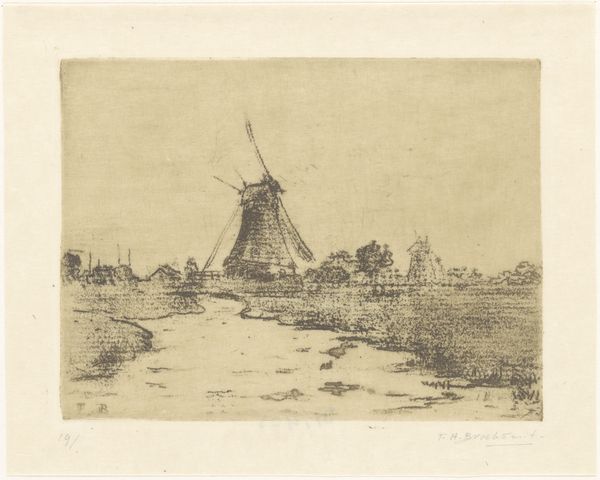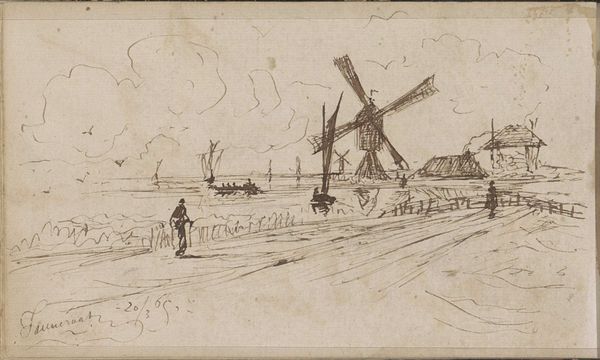
Landschap met twee molens en enkele knotwilligen langs de vliet te Meern 1871
0:00
0:00
drawing, pencil
#
drawing
#
dutch-golden-age
#
pencil sketch
#
landscape
#
etching
#
pencil
#
pencil work
#
realism
Dimensions: height 246 mm, width 363 mm
Copyright: Rijks Museum: Open Domain
This landscape with windmills and pollard willows was sketched by Willem Roelofs, using graphite. The windmills stand as potent symbols of Dutch identity and ingenuity, and the pollard willows, regularly pruned, evoke themes of human intervention in nature. The windmill, prominently featured, is a technological marvel, initially designed to harness the wind's energy to drain the lowlands. These structures also take on a broader significance as emblems of prosperity and industry. Similar motifs appear in other artworks across Europe, and in each context, the windmill's meaning shifts. Think of Don Quixote tilting at windmills, an act of foolish defiance, or the pastoral scenes of the English countryside, where windmills evoke nostalgia for a simpler time. In this Dutch landscape, however, the windmills symbolize the eternal battle against the sea. Observe how the pollard willows, with their repeatedly trimmed branches, appear repeatedly in Dutch painting. They are a symbol of resilience and adaptation, echoing similar shapes in ancient tree worship that have resurfaced, evolved, and taken on new meanings through time.
Comments
No comments
Be the first to comment and join the conversation on the ultimate creative platform.

